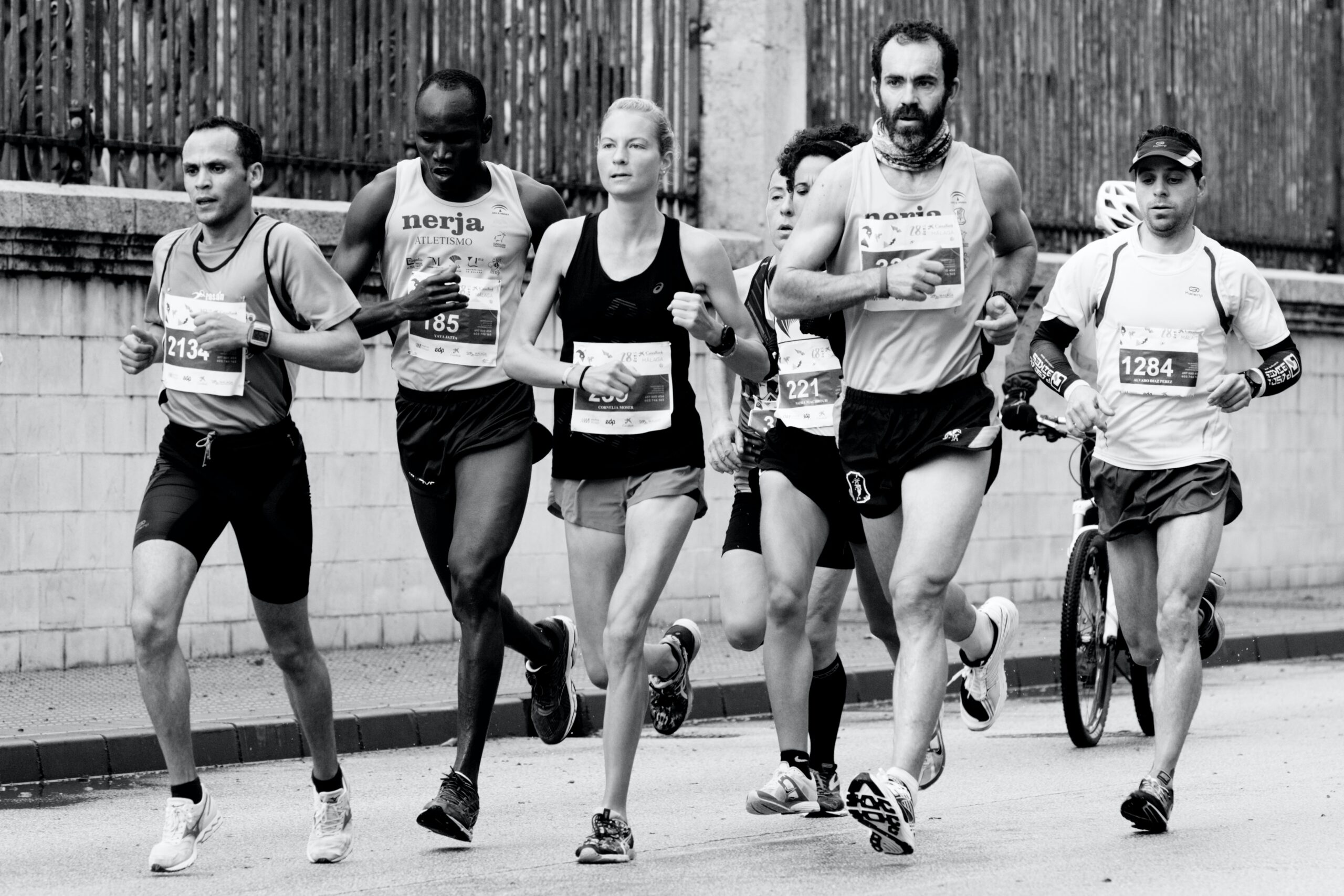
There’s obviously a lot to consider when improving running performance and it is super easy to overlook some fundamentals while digging into the endless (and growing!) offerings of data from all of the new technology and watches. One of crucial fundamentals on my mind for this post is step rate, also known as cadence. Running with a high step rate, or a faster turnover of steps per minute, offers numerous benefits that can enhance your running experience and overall fitness. There’s a lot to consider in each individual’s optimal cadence but on average, a “healthy cadence” is typically considered to be around 170-180 steps per minute. Marathon world record holder, Eliud Kipchoge, averages around 185 steps per minute for the distance.
1. Injury Prevention:
One of the most significant advantages of maintaining a high step rate is injury prevention. When you increase your step rate, your feet spend less time on the ground with each stride. This reduces the impact forces transmitted through your legs and minimizes the risk of injuries such as shin splints, stress fractures, and knee pain. A faster cadence promotes a shorter, lighter step, which can be gentler on your joints and muscles.
I compare it to lifting weights. Imagine lifting a 5lb weight VS a 50lb weight to do a certain amount of total work. Lifting the 5lb weight ten times would feel a lot easier, relatively, than lifting the 50lb weight once.
2. Enhanced Efficiency:
Running with a high step rate can lead to improved running efficiency. By taking quicker, shorter strides, you reduce the vertical oscillation of your body, meaning you waste less energy going up and down with each step. Obviously, some movement up and down is necessary for everyone while running, but if you can reduce this up and down motion, you’ll use more energy moving where you want to go… forward!
To use another extreme example, let’s say you were the fictional superhero, Superman, and as legend has it you could “leap tall buildings in a single bound” except you are the runner version, where you could “run” a mile in just two steps. You would also have to bound pretty high off the ground to accomplish those steps. The height you travel is all wasted energy because it’s not moving you FORWARD.
3. Increased Speed:
For those looking to boost their running speed, a higher step rate can be a game-changer. When you increase your cadence, you naturally run faster, as your body adapts to the increased leg turnover. Your feet don’t move while they are on the ground! Less time spent with your feet not moving, is more time, again, MOVING FORWARD!
4. Better Running Form:
A high step rate often encourages better running form. When you aim for a faster cadence, you tend to land with your feet closer to your body’s center of mass, reducing overstriding. Overstriding can lead to inefficient biomechanics and an increased risk of injuries. A faster cadence promotes a midfoot or forefoot strike, which can be more efficient and less injury-prone. This also forces you to engage your core more without you even knowing it, I call it “running with your whole body, not just your legs.”
5. Reduced Fatigue:
Running with a higher step rate can help you delay fatigue during your runs. When you run at a slower cadence, your muscles have to work harder to generate the force needed for each stride. By taking quicker steps, you distribute this load more evenly, which can help you feel fresher for longer.
This also goes back to the weight analogy – you will inevitably get more tired, quicker, trying to move heavier weight.
6. Better Cadence Variability:
A high step rate allows you to adapt to different running conditions more effectively. Whether you’re tackling hills, running into a headwind, or dealing with uneven terrain, the ability to adjust your step rate allows for greater flexibility in your running mechanics, reducing the risk of injury and optimizing your performance.
My favorite way to play with cadence while running is with music. A quick Spotify search for “Running at 180” and you’ll find a bunch of pre-made playlists of all music varieties. Hit PLAY and you’ll notice your feet will more naturally move to the rhythm of the songs playing. I suggest checking out what your natural cadence without the music is (most watches track this and can display it) and then trying to bump it up just a little faster over a few weeks. (Don’t try and change it dramatically right before the big race!) Also, if you aren’t the music type, some watches have a metronome built in that will either beep or vibrate to a programable rhythm for cadence practicing.
You’ll feel lighter on your feet in no time! You’ll be less prone to injuries, and have the satisfaction of seeing improvements in your performance over time. The reduced risk of injury also means less time off from running, allowing you to stay consistent with your training.
Billy is an easy going and adventure seeking endurance junkie, coach, and writer. Catch him enjoying everything from local 5k races, to UTMB, and former record holder for fastest time at the Antarctic Ice Marathon. When he’s not running or biking, he makes a living as a massage therapist at his own practice in downtown Burlington. Check him out at btvmassage.com.
